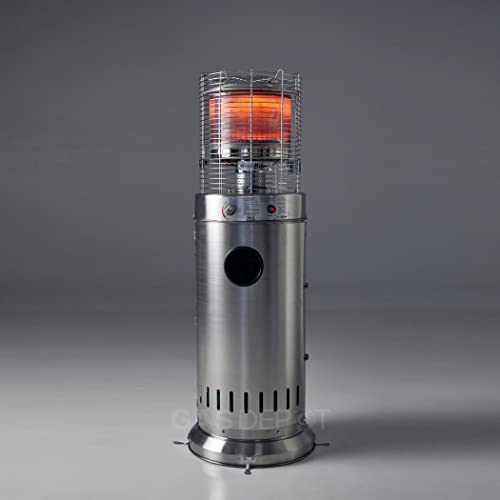The Comprehensive Guide to Gas Patio Heaters
As outdoor living becomes progressively popular, gas patio heaters have actually emerged as an important element for extending the outdoor entertaining season. Whether for a relaxing night with buddies or a vibrant family event, these heaters provide warmth and convenience that can change any outdoor space. This article checks out the numerous elements of gas patio heaters, including their types, benefits, operational mechanics, maintenance suggestions, and factors to consider for buying one.
What is a Gas Patio Heater?
A gas patio heater is a type of heating home appliance developed specifically for outdoor usage. Usually fueled by propane or natural gas, these heaters generate heat to combat the chill of the evening air, allowing outdoor social activities to continue even under cooler temperature levels.
Types of Gas Patio Heaters
Gas patio heaters been available in several various styles, each suited for different requirements and aesthetics. The common types consist of:
Freestanding Heaters:
- These are the most typical type and are typically high, with a large base and a heater aspect at the top.
- They can easily be moved around and appropriate for different outdoor settings.
Tabletop Heaters:
- Smaller and more compact, tabletop heaters are designed to rest on tables or other surface areas.
- They provide warmth for smaller locations and are normally simpler to keep.
Wall-Mounted Heaters:
- These are fixed to a wall and are a great choice for outdoor patios with restricted space.
- They offer a more long-term heating service and can complement outdoor decor.
Patio Fire Pits:
- While not exclusively heaters, gas fire pits provide warmth and ambiance at the same time.
- They can serve as a centerpiece for outdoor gatherings.
| Heater Type | Description | Best For |
|---|---|---|
| Freestanding | Tall, mobile systems with a heating element on top | Big open locations |
| Tabletop | Compact models ideal for table surfaces | Little events |
| Wall-Mounted | Fixed systems providing constant heat | Smaller patios |
| Patio Fire Pits | Integrated heating and decorative function | Ambiance and heat |
Benefits of Gas Patio Heaters
Investing in a gas patio heater offers various benefits:
- Extended Outdoor Enjoyment: Gas heaters permit property owners to enjoy their patios even during chillier months.
- Quick Heating Capability: Gas heaters warm up quickly, providing immediate remedy for the chill.
- User-Friendly Operation: Most gas heaters feature simple ignition controls for ease of use.
- Aesthetic Appeal: Many gas heaters are created to be visually enticing, boosting the total appearance of your outdoor space.
- Flexible Fuel Options: Availability of both propane and gas models caters to numerous requirements and preferences.
Functional Mechanics
Gas patio heaters operate by transforming fuel into convected heat. Here's a simplified breakdown of how they work:
- Fuel Source: Most gas heaters use propane or natural gas. The kind of fuel affects performance and schedule.
- Ignition System: Most designs include either a manual ignition (using a lighter or match) or an electronic ignition (push-button).
- Heating Element: Once fired up, gas streams through a burner, where it is combusted to create heat. High-Quality Heaters spreads from the heating component.
- Heat Diffuser: Some heaters have a reflector to help distribute heat more uniformly throughout a larger area.
Fuel Comparison
| Fuel Type | Pros | Cons |
|---|---|---|
| Propane | Portable, commonly readily available | Requires tank replacement/refill |
| Gas | Cost-effective if connected to a supply | Installation more complicated |
Maintenance Tips for Gas Patio Heaters
Appropriate care will extend the life of gas patio heaters. Here are some vital upkeep pointers:
- Regular Cleaning: Keep the heater tidy from dirt and debris. Regularly wipe down the surface areas.
- Inspect Gas Supply Lines: Check for leaks or cracks in the gas lines. Usage soapy water to spot leakages by observing bubbles.
- Seasonal Checks: Before the usage of a heater, check all components and repair or replace any damaged parts.
- Storage: During off-seasons, store the heater in a dry location or cover it for security.
- Expert Servicing: Consider a professional check-up yearly, specifically for gas models.
Considerations When Purchasing a Gas Patio Heater
When choosing a gas patio heater, keep the following elements in mind:
- Heating Capacity:
- Measured in BTUs, a greater BTU score supplies more heat.
- Size and Weight:
- Depending on the space readily available and whether the heater requires to be portable.
- Product:
- Stainless steel heaters provide toughness and resistance to rust and corrosion.
- Style:
- Choose a style that complements your outdoor decoration.
- Safety Features:
- Look for automatic shut-off functions or safety tilt valves to avoid mishaps.
FAQs
Q: Are gas patio heaters safe to use?A: Yes
, when utilized according to the maker's guidelines and safety guidelines, gas patio heaters are safe. Constantly guarantee correct ventilation.
Q: How long can one propane tank last?A: A basic 20 pound
propane tank can last anywhere from 8 to 30 hours, depending upon the heat setting. Q: Can gas patio heaters be utilized indoors?A: No,
gas patio heaters are designed for outdoor use only due to the danger of carbon monoxide accumulation in enclosed areas. Q: Do gas patio heaters require assembly?A: Most freestanding designs need standard assembly
, while tabletop and wall-mounted options might need more
specific assembly. Gas patio heaters are an appealing option for those seeking to boost their outdoor experiences throughout the year.
By comprehending the different types, advantages, and operational mechanics, possible buyers can make informed choices that align with their needs. Appropriate upkeep and security considerations will guarantee that these heaters stay reliable and safe, providing comfort to outdoor gatherings for many seasons to come. With careful choice and care, a gas patio heater can become a cherished addition to any outdoor home.

